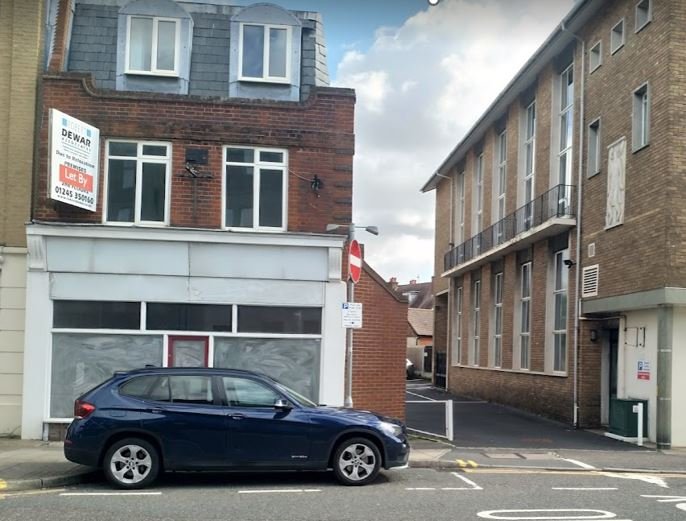Class A - New dwellinghouses on detached blocks of flats
Class A – Unlocking New Residential Opportunities with Upward Extensions
Class A of the General Permitted Development Order (GPDO), introduced in August 2020, offers an exciting opportunity to add up to two additional storeys to purpose-built, detached blocks of flats.
This airspace development option is an efficient way to increase housing supply without extending a building’s footprint—ideal for urban environments.
What is Class A Permitted Development?
Class A enables the upward extension of detached blocks of flats for residential purposes, provided certain criteria are met:
Eligible Buildings: The block must be purpose-built and detached, constructed between 1st July 1948 and 5th March 2018. Conversions created under other GPDO classes, such as Class M, N, O, P, PA, or Q, are not eligible unless full planning permission was obtained, and the conversion completed by 5th March 2018.
Additional Storeys: Only two storeys can be added, and the final height (excluding plant and machinery) must not exceed 30 metres.
Use Class Restriction: New units must remain as C3 residential flats, not HMOs. Converting them to HMOs would require a separate planning application.
When is Class A Not Applicable?
Class A development cannot be undertaken in the following scenarios:
Prohibited Locations: Article 2(3) land (e.g., conservation areas), Sites of Special Scientific Interest (SSSIs), listed buildings, safety hazard areas, military explosives zones, or within 3 km of an aerodrome.
Building Requirements: The building must be at least three storeys tall, detached, and the proposed development must not extend beyond the existing curtilage.
Our team can help identify if your site qualifies for Class A development and explore alternative solutions if it doesn’t.
Class A Prior Approval Considerations
Developers must seek prior approval from the local authority, which involves assessing:
Transport & Highways Impact: Any changes to local traffic or access.
Flood Risks: A flood risk assessment may be required for buildings in certain zones.
Natural Light: Adequate natural light must be provided in all habitable rooms.
Neighbouring Amenity: Addressing potential overlooking, privacy issues, and loss of light for surrounding properties.
External Appearance: Ensuring the new design complements the existing structure and surrounding area.
Additional Requirements: Authorities may also review air traffic impacts, contamination risks, and the effect on protected views (e.g., protected vistas in London).
The Class A Prior Approval Process: What You Need to Know
To get started, you’ll need to submit a comprehensive prior approval application that includes:
A detailed written description of the proposed works.
Scaled floor plans showing the current layout and proposed changes.
A list of all current addresses within the block of flats.
Supporting reports, such as flood risk assessments and construction management plans.
Timelines: Local authorities aim to decide within 8 weeks (56 days). If no decision is made within this timeframe, permission is deemed granted.
-
PART 20 Construction of New Dwellinghouses
Class A New dwellinghouses on detached blocks of flats
Permitted development
A. Development consisting of works for the construction of up to two additional storeys of new dwellinghouses immediately above the existing topmost residential storey on a building which is a purpose-built, detached block of flats, together with any or all—
(a)engineering operations reasonably necessary to construct the additional storeys and new dwellinghouses;
(b)works for the replacement of existing plant or installation of additional plant on the roof of the extended building reasonably necessary to service the new dwellinghouses;
(c)works for the construction of appropriate and safe access and egress to the new and existing dwellinghouses, including means of escape from fire, via additional external doors or external staircases;
(d)works for the construction of storage, waste or other ancillary facilities reasonably necessary to support the new dwellinghouses.
Development not permitted
A.1. Development is not permitted by Class A if—
(a)the permission to use any building as a dwellinghouse has been granted only by virtue of Class M, N, O, P, PA or Q of Part 3 of this Schedule;
(b)above ground level, the building is less than 3 storeys in height;
(c)the building was constructed before 1st July 1948, or after 5th March 2018;
(d)the additional storeys are constructed other than on the principal part of the building;
(e)the floor to ceiling height of any additional storey is—
(i)more than 3 metres in height; or
(ii)more than the floor to ceiling height of any of the existing storeys,
whichever is the lesser, where such heights are measured internally;
(f)the new dwellinghouses are not flats;
(g)the overall height of the roof of the extended building would be greater than 7 metres higher than the highest part of the existing roof (not including existing plant);
(h)the extended building (not including plant) would be greater than 30 metres in height;
(i)development under Class A.(a) would include the provision of visible support structures on or attached to the exterior of the building upon completion of the development;
(j)development under Class A.(a) would consist of engineering operations other than works within the existing curtilage of the building to—
(i)strengthen existing walls;
(ii)strengthen existing foundations; or
(iii)install or replace water, drainage, electricity, gas or other services;
(k)in the case of Class A.(b) development there is no existing plant on the building;
(l)in the case of Class A.(b) development the height of any replaced or additional plant as measured from the lowest surface of the new roof on the principal part of the new building would exceed the height of any existing plant as measured from the lowest surface of the existing roof on the principal part of the existing building;
(m)development under Class A.(c) would extend beyond the curtilage of the existing building;
(n)development under Class A.(d) would—
(i)extend beyond the curtilage of the existing building;
(ii)be situated on land forward of a wall forming the principal elevation of the existing building; or
(iii)be situated on land forward of a wall fronting a highway and forming a side elevation of the existing building;
(o)the land or site on which the building is located, is or forms part of—
(i)article 2(3) land;
(ii)a site of special scientific interest;
(iii)a listed building or land within its curtilage;
(iv)a scheduled monument or land within its curtilage;
(v)a safety hazard area;
(vi)a military explosives storage area; or
(vii)land within 3 kilometres of the perimeter of an aerodrome.
Conditions
A.2.—
(1) Where any development under Class A is proposed, development is permitted subject to the condition that before beginning the development, the developer must apply to the local planning authority for prior approval of the authority as to—
(a)transport and highways impacts of the development;
(b)air traffic and defence asset impacts of the development;
(c)contamination risks in relation to the building;
(d)flooding risks in relation to the building;
(e)the external appearance of the building;
(f)the provision of adequate natural light in all habitable rooms of the new dwellinghouses;
(g)impact on the amenity of the existing building and neighbouring premises including overlooking, privacy and the loss of light; and
(h)whether because of the siting of the building, the development will impact on a protected view identified in the Directions Relating to Protected Vistas dated 15 March 2012 issued by the Secretary of State,
and the provisions of paragraph B (prior approval) of this Part apply in relation to that application.
(2) Any development under Class A is permitted subject to the condition that it must be completed within a period of 3 years starting with the date prior approval is granted.
(3) Any development under Class A is permitted subject to the condition that before beginning the development, the developer must provide the local planning authority with a report for the management of the construction of the development, which sets out the proposed development hours of operation and how any adverse impact of noise, dust, vibration and traffic on occupiers of the building and adjoining owners or occupiers will be mitigated.
(4) The developer must notify the local planning authority of the completion of the development as soon as reasonably practicable after completion.
(5) The notification referred to in sub-paragraph (4) must be in writing and must include—
(a)the name of the developer;
(b)the address or location of the development; and
(c)the date of completion.
(6) Any new dwellinghouse created under Class A is to remain in use as a dwellinghouse within the meaning of Class C3 of the Schedule to the Use Classes Order and for no other purpose, except to the extent that the other purpose is ancillary to the primary use as a dwellinghouse.
Procedure for applications for prior approval under Part 20
B.—
(1) The following provisions apply where under this Part, a developer is required to make an application to a local planning authority for prior approval.
(2) The application must be accompanied by—
(a)a written description of the proposed development, which, in relation to development proposed under Class A, must include details of any dwellinghouse and other works proposed under paragraphs A.(a) to (d);
(b)a plan which is drawn to an identified scale and shows the direction of North indicating the site and showing the proposed development;
(c)floor plans which are drawn to an identified scale and show the direction of North indicating the dimensions and proposed use of each room, the position and dimensions of windows, doors and walls, and the existing and proposed elevations of the building;
(d)a written statement specifying the number of new dwellinghouses proposed by the development that is additional to the number of dwellinghouses in the building immediately prior to development;
(e)a list of all addresses of the flats within the existing block of flats;
(f)the developer’s contact address;
(g)the developer’s email address if the developer is content to receive communications electronically; and
(h)where sub-paragraph (6) requires the Environment Agency to be consulted, a site-specific flood risk assessment,
together with any fee required to be paid.
(3) The local planning authority may refuse an application where, in the opinion of the authority—
(a)the proposed development does not comply with, or
(b)the developer has provided insufficient information to enable the authority to establish whether the proposed development complies with,
any conditions, limitations or restrictions specified in this Part as being applicable to the development in question.
(4) Sub-paragraphs (5) to (10) and (12) do not apply where a local planning authority refuses an application under sub-paragraph (3) and for the purposes of section 78 (appeals) of the Act(3) such a refusal is to be treated as a refusal of an application for approval.
(5) Where the application relates to prior approval as to transport and highways impacts of the development, on receipt of the application where in the opinion of the local planning authority the development is likely to result in a material increase or a material change in the character of traffic in the vicinity of the site, the local planning authority must consult—
(a)where the increase or change relates to traffic entering or leaving a trunk road, the highway authority for the trunk road;
(b)the local highway authority, where the increase or change relates to traffic entering or leaving a classified road or proposed highway, except where the local planning authority is the local highway authority; and
(c)the operator of the network which includes or consists of the railway in question, and the Secretary of State for Transport, where the increase or change relates to traffic using a level crossing over a railway.
(6) Where the application relates to prior approval as to the flooding risks on the site, on receipt of the application, the local planning authority must consult the Environment Agency where the development is—
(a)in an area within Flood Zone 2 or Flood Zone 3; or
(b)in an area within Flood Zone 1 which has critical drainage problems and which has been notified to the local planning authority by the Environment Agency for the purpose of paragraph (zc)(ii) in the Table in Schedule 4 to the Procedure Order.
(7) Where the application relates to prior approval as to the impact on air traffic or defence assets, the local planning authority must consult any relevant operators of aerodromes, technical sites or defence assets and where appropriate the Civil Aviation Authority and the Secretary of State for Defence.
(8) Where an aerodrome, technical site or defence asset is identified on a safeguarding map provided to the local planning authority, the local planning authority must not grant prior approval contrary to the advice of the operator of the aerodrome, technical site or defence asset, the Civil Aviation Authority or the Secretary of State for Defence.
(9) Where the application relates to prior approval as to natural light, the local planning authority must refuse prior approval if adequate natural light is not provided in all the habitable rooms of the dwellinghouses.
(10) Where the application relates to prior approval as to the impact on protected views, the local planning authority must consult Historic England, the Mayor of London and any local planning authorities identified in the Directions Relating to Protected Vistas dated 15th March 2012 issued by the Secretary of State.
(11) The local planning authority must notify the consultees referred to in sub-paragraphs (5), (6), (7) and (10) specifying the date by which they must respond, being not less than 21 days from the date the notice is given.
(12) The local planning authority must give notice of the proposed development—
(a)by site display in at least one place on or near the land to which the application relates for not less than 21 days of a notice which—
(i)describes the proposed development;
(ii)provides the address of the proposed development; and
(iii)specifies the date by which representations are to be received by the local planning authority;
(b)by serving a notice in that form on all owners and occupiers of the flats within existing block of flats; and
(c)by serving a notice in that form on any adjoining owner or occupier.
(13) When computing the number of days in sub-paragraphs (11) and (12)(a), any day which is a public holiday must be disregarded.
(14) The local planning authority may require the developer to submit such information as the authority may reasonably require in order to determine the application, which may include—
(a)assessments of impacts or risks;
(b)statements setting out how impacts or risks are to be mitigated, having regard to the National Planning Policy Framework issued by the Ministry of Housing, Communities and Local Government in February 2019; or
(c)details of proposed building or other operations.
(15) The local planning authority must, when determining an application—
(a)take into account any representations made to them as a result of any consultation under sub-paragraph (5), (6), (7) or (10) and any notice given under sub-paragraph (12);
(b)have regard to the National Planning Policy Framework issued by the Ministry of Housing, Communities and Local Government in February 2019, so far as relevant to the subject matter of the prior approval, as if the application were a planning application; and
(c)in relation to the contamination risks on the site—
(i)determine whether, as a result of the proposed development, taking into account any proposed mitigation, the site will be contaminated land as described in Part 2A of the Environmental Protection Act 1990, and in doing so have regard to the Contaminated Land Statutory Guidance issued by the Secretary of State for the Environment, Food and Rural Affairs in April 2012, and
(ii)if they determine that the site will be contaminated land, refuse to give prior approval.
(16) The development must not begin before the receipt by the applicant from the local planning authority of a written notice giving their prior approval.
(17) The development must be carried out in accordance with the details approved by the local planning authority.
(18) The local planning authority may grant prior approval unconditionally or subject to conditions reasonably related to the subject matter of the prior approval.
Interpretation of Part 20
C. For the purposes of Part 20—
“block of flats” means a building which is divided horizontally and consists of separate and self-contained premises constructed for use for the purposes of a dwellinghouse, and any ancillary facilities constructed solely for use by occupiers of the building;
“defence asset” is a site identified on a safeguarding map provided to the local planning authority for the purposes of a direction made by the Secretary of State in exercise of the powers conferred by article 31(1) of the Procedure Order or any previous powers to the like effect;
“detached” means that the building does not share a party wall with a neighbouring building;
“flat” means a separate and self-contained premises constructed for use for the purposes of a dwellinghouse;
“habitable rooms” means any rooms used or intended to be used for sleeping or living which are not solely used for cooking purposes, but does not include bath or toilet facilities, service rooms, corridors, laundry rooms, hallways or utility rooms;
“principal part” means the main part of the building excluding any front, side or rear extension of a lower height, whether this forms part of the original building or a subsequent addition;
“purpose-built” means a building that was built as and remains as a block of flats; and
“technical sites” has the same meaning as in Annexe 1 of the Town and Country Planning (Safeguarded Aerodromes, Technical Sites and Military Explosives Storage Areas) Direction 2002
Our Recent Planning Successes
Contact Our Planners about Your Class A Project
We can offer expert guidance to navigate the complexities of Class A GPDO regulations. Here’s how we can help:
Feasibility Studies: We assess whether your project is eligible and viable under Class A.
Tailored Prior Approval Applications: Our team ensures your prior approval application is detailed, compliant, and supported by all necessary documentation.
Contact us today to discuss your Class A project and how we can help turn your airspace































